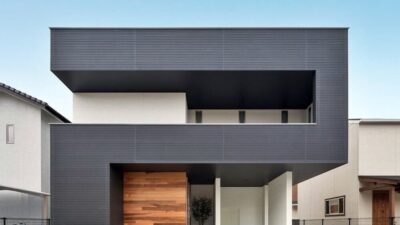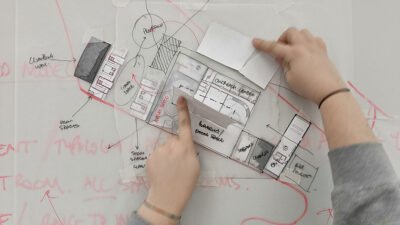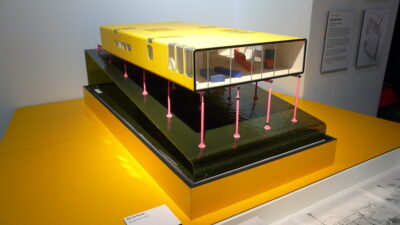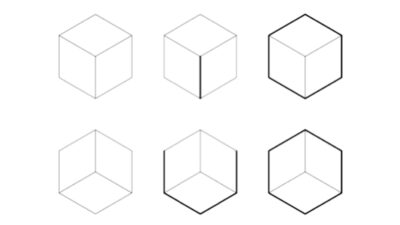In the era of environmental awareness, sustainable architecture emerges as a beacon of hope and innovation. This architectural philosophy transcends traditional building methods, focusing on minimizing environmental impact while maximizing functionality and aesthetic value. It’s a blend of art, science, and environmental consciousness, creating spaces that are as beautiful as they are eco-friendly.
The Philosophy Behind Sustainable Architecture
Sustainable architecture is not just an approach to building; it’s a holistic philosophy that intertwines with the intricate web of environmental, social, and economic factors. This architectural ethos is founded on the principle of creating spaces that exist in harmony with the natural world. It transcends the traditional boundaries of construction, advocating for a symbiotic relationship where buildings not only take from the environment but also give back. This philosophy champions the use of innovative designs and technologies that reduce the carbon footprint and enhance the building’s life cycle, thereby nurturing a sustainable future.
Key Elements of Sustainable Architecture
- Energy Efficiency: The cornerstone of sustainable architecture is energy efficiency. This involves the incorporation of renewable energy sources, such as solar panels, wind turbines, and geothermal systems, into building designs. Energy-efficient appliances, LED lighting, and smart home technologies further augment this element, significantly reducing energy consumption and greenhouse gas emissions;
- Water Conservation: Water, a precious resource, is at the forefront of sustainable design. Techniques like rainwater harvesting, greywater recycling, and the use of water-efficient fixtures ensure that every drop is utilized judiciously. Landscape designs incorporating drought-resistant plants and efficient irrigation systems also play a crucial role in conserving water;
- Eco-Friendly Materials: The choice of materials significantly impacts the sustainability of a building. Sustainable architecture prioritizes materials that are recycled, renewable, and locally sourced, thereby reducing the environmental impact associated with transportation and manufacturing. Bamboo, reclaimed wood, and recycled metal and glass are some examples of eco-friendly materials that are not only sustainable but also add aesthetic value;
- Waste Reduction: Efficient planning and design are essential in minimizing construction waste. This involves precise calculations, modular construction techniques, and the reuse or recycling of construction debris. By reducing waste, sustainable architecture significantly lowers the environmental impact of building projects.
Real-World Examples and Case Studies
- The Edge, Amsterdam: A paragon of sustainable design, The Edge in Amsterdam, is renowned for its cutting-edge technology and energy efficiency. It’s a smart building that uses an extensive network of sensors to optimize energy use and create a dynamic and comfortable work environment;
- Bosco Verticale, Milan: Bosco Verticale in Milan, also known as the “Vertical Forest,” is a striking example of how nature and urban living can coexist. This residential project incorporates trees and plants on the balconies, not only enhancing air quality but also providing a unique aesthetic appeal.
Sustainable Architecture and Urban Planning
In the context of urban planning, sustainable architecture is a game-changer. It offers innovative solutions to make densely populated urban areas more livable and sustainable. The incorporation of green spaces, eco-friendly public transportation systems, and sustainable housing developments are vital in creating cities that are not only environmentally conscious but also resilient and adaptable to the changing climate.
Challenges and Misconceptions
Despite its numerous benefits, sustainable architecture faces several challenges. One of the primary hurdles is the higher initial investment compared to traditional construction. Additionally, there are misconceptions about the practicality and effectiveness of sustainable buildings. However, these challenges are increasingly being overcome through technological advancements, economic incentives, and a growing awareness of the long-term benefits.
Integrating Technology and Innovation in Sustainable Architecture
Advanced Building Technologies
The integration of advanced technologies is pivotal in elevating sustainable architecture to new heights. Smart building systems, which encompass automated lighting, heating, and cooling, play a crucial role in optimizing energy use. These systems dynamically adjust to external conditions and occupant preferences, ensuring comfort while minimizing energy waste. Moreover, innovations like energy-efficient window coatings, green roofing systems, and intelligent insulation materials are transforming the way buildings interact with their environment.
Renewable Energy Integration
A key component in sustainable architecture is the harnessing of renewable energy sources. Solar panels and wind turbines are becoming increasingly common in urban landscapes, providing clean energy and reducing reliance on fossil fuels. The integration of these renewable energy systems not only lowers the carbon footprint of buildings but also paves the way for self-sustaining, off-grid structures. The future of sustainable architecture sees buildings not just as consumers of energy but as active producers, contributing to a greener grid.
Eco-Friendly Smart Homes
Smart home technology is revolutionizing sustainable living. From intelligent thermostats that learn and adapt to occupants’ schedules to energy-efficient appliances that can be remotely controlled, these innovations are making sustainable living more accessible and convenient. The convergence of IoT (Internet of Things) devices in home automation systems is a testament to how technology can be leveraged to enhance the sustainability of residential spaces.

The Role of Community and Culture in Sustainable Architecture
Community-Centric Design
Sustainable architecture extends beyond the physical structure to encompass the community it serves. Community-centric designs focus on creating spaces that foster social interaction and connectivity. This includes the development of public spaces like parks, community gardens, and pedestrian-friendly streets that encourage a sense of community and belonging. By designing buildings and environments that cater to the needs of the community, sustainable architecture plays a vital role in enhancing the social fabric of urban and rural areas alike.
Preserving Cultural Heritage
An often-overlooked aspect of sustainable architecture is its role in preserving cultural heritage. By integrating traditional architectural practices and local materials, sustainable design can celebrate and maintain the unique cultural identities of different regions. This approach not only ensures the longevity of cultural heritage but also encourages the use of indigenous knowledge and practices that are inherently sustainable.
Educational and Awareness Initiatives
Educational and awareness initiatives are crucial in promoting the principles of sustainable architecture. By incorporating sustainability concepts into educational curricula and public awareness campaigns, communities become more informed about the benefits and practices of sustainable living. These initiatives play a key role in shaping future generations that are more environmentally conscious and proactive in adopting sustainable practices.
The Economic Impact and Viability of Sustainable Architecture
Long-Term Financial Benefits
While the initial investment in sustainable architecture may be higher than traditional construction, the long-term economic benefits are substantial. Reduced utility costs, lower maintenance expenses, and increased property values contribute to the financial viability of sustainable buildings. Furthermore, as the demand for sustainable features grows, these buildings often enjoy a competitive advantage in the real estate market.
Incentives and Funding Opportunities
Governments and private institutions are increasingly offering incentives and funding opportunities for sustainable building projects. These include tax credits, grants, and low-interest loans, which make sustainable architecture more accessible and financially attractive. These incentives not only lower the financial barriers to sustainable construction but also signal a broader commitment to environmental stewardship.
Sustainable Architecture as an Economic Driver
Sustainable architecture also acts as a catalyst for economic growth. It spurs innovation in green technologies and materials, creating new markets and job opportunities. Moreover, the focus on local materials and craftsmanship in sustainable design can boost local economies and support small businesses. In this way, sustainable architecture not only contributes to environmental sustainability but also plays a significant role in economic development.
Sustainable Architecture’s Impact on Public Health and Wellbeing
Enhancing Indoor Environmental Quality
Sustainable architecture significantly improves indoor environmental quality, which has a direct impact on the health and wellbeing of occupants. By prioritizing natural light, proper ventilation, and the use of non-toxic building materials, these structures create healthier living and working spaces. The incorporation of plants and green spaces within buildings also contributes to better air quality and a connection to nature, which has been shown to reduce stress and improve mental health.
Promoting Active Lifestyles
Sustainable buildings often encourage more active lifestyles. This is achieved through design elements such as:
- Accessible stairwells that encourage walking instead of elevator use;
- Integrated bike storage and shower facilities to support cycling to work;
- Landscaping that invites outdoor activities and social interaction.
Addressing Urban Heat Islands
Sustainable architecture plays a critical role in mitigating the urban heat island effect, a phenomenon where urban areas experience higher temperatures than their rural surroundings. Strategies include:
- Reflective roofing materials to reduce heat absorption;
- Increased greenery through parks, green roofs, and walls;
- Strategic building placement and design to enhance natural cooling.
Sustainability in Building Maintenance and Lifecycle Management
Efficient Resource Management
Sustainable architecture extends into the realm of building maintenance and lifecycle management, emphasizing the efficient use of resources throughout the building’s life. This includes:
- Implementing energy management systems to monitor and optimize energy use;
- Regular maintenance of green infrastructure like living roofs and solar panels;
- Use of durable and easy-to-maintain materials to prolong the building’s lifespan.
Lifecycle Assessment and End-of-Life Planning
A key aspect of sustainable architecture is considering the entire lifecycle of a building, from construction to demolition. This involves:
- Assessing the environmental impact of materials over their entire lifespan;
- Designing for deconstruction, where materials can be reused or recycled at the end of the building’s life;
- Planning for adaptability, allowing buildings to be repurposed rather than demolished.
Reducing Operational Costs
Sustainable architecture contributes to reducing the operational costs of buildings. This is achieved through:
- Lower energy consumption due to efficient design and renewable energy sources;
- Reduced water usage with water-saving fixtures and rainwater harvesting systems;
- Minimized need for repairs and replacements due to the use of durable materials.
Advancements in Sustainable Materials and Construction Techniques
Innovation in Eco-Friendly Materials
The field of sustainable architecture is witnessing a surge in the use of innovative, eco-friendly materials that are transforming the construction industry. Developments in biodegradable materials, such as bamboo, hempcrete, and mycelium-based products, are paving the way for more sustainable building options. These materials not only reduce the environmental impact during construction but also during the lifecycle of the building, as they are often more energy-efficient and have a lower carbon footprint.
Cutting-Edge Construction Techniques
Alongside new materials, groundbreaking construction techniques are emerging that enhance the sustainability of buildings. These include modular construction, where building components are prefabricated in a factory setting and then assembled on-site, reducing waste and construction time. Additionally, 3D printing technology is beginning to play a role in sustainable architecture, offering the potential for more efficient use of materials and innovative design possibilities.
Embracing Circular Economy Principles
Sustainable architecture is increasingly incorporating principles of the circular economy, which focuses on minimizing waste and making the most of resources. This involves designing buildings with flexibility and adaptability in mind, allowing them to be easily modified or repurposed rather than demolished. It also encompasses the idea of “urban mining,” where materials from demolished buildings are reused in new construction projects.
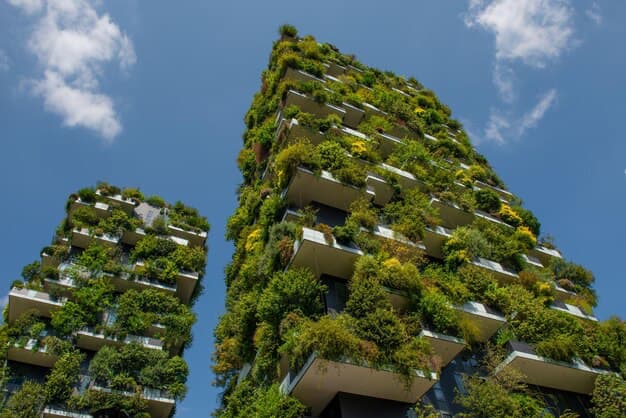
The Psychological and Social Aspects of Sustainable Architecture
Impact on Occupant Wellbeing
The design of sustainable buildings goes beyond environmental considerations, significantly impacting the psychological wellbeing of occupants. Spaces that are filled with natural light, provide views of nature, and offer high air quality have been shown to improve mood, increase productivity, and reduce stress. Sustainable architecture, therefore, plays a crucial role in creating environments that are not only physically healthy but also mentally and emotionally nurturing.
Fostering Community Engagement
Sustainable architecture often incorporates elements that foster community engagement and social interaction. This can include communal spaces such as green courtyards, rooftop gardens, and shared amenities that encourage residents or employees to come together, interact, and build community bonds. By promoting social cohesion, sustainable architecture contributes to building stronger, more resilient communities.
Educating and Inspiring Future Generations
Sustainable buildings often serve as educational tools in themselves, showcasing sustainable practices and technologies to the public. Schools, office buildings, and public spaces designed with sustainable principles can inspire and educate occupants and visitors about the importance of environmental stewardship. This educational aspect is crucial for inspiring future generations to continue the pursuit of sustainable living and building practices.
The Future of Sustainable Architecture
As we confront the realities of climate change and resource depletion, sustainable architecture is rapidly moving from a niche practice to a fundamental aspect of building design. It offers a path to a resilient and adaptable future, where buildings not only mitigate their environmental impact but also enhance the well-being of their occupants.
Conclusion
Sustainable architecture represents a commitment to the future of our planet and the well-being of its inhabitants. It’s about constructing spaces that are efficient, aesthetically pleasing, and in harmony with the environment. The future of sustainable architecture is bright, and its principles will be integral in shaping a greener, more sustainable world for generations to come.



